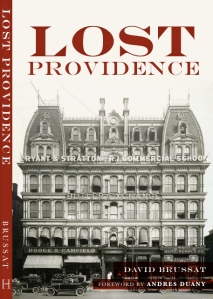
Exaggerated visualization of how King Minos’s palace might have looked. (John Good)
Came across a passage in James Crawford’s fascinating Fallen Glory, a collection of mini-histories of famous buildings, many ancient, and the societies that grew up around them and their implications for societies today. The chapter “Modernism’s Labyrinth” follows archaeological digs in Knossos, the ancient Minoan city on the Mediterranean island of Crete.

Theseus slays Minotaur, Jardin des Tuilleries, Paris. (Wikipedia)
It seems that Arthur Evans found what he thought was the lair of the mythical Minotaur, part man and part bull (Ovid), that dwelt in the Labyrinth designed for King Minos by Daedalus and son Icarus (before his wax-winged accident) until it was slain by Theseus.
Recent posts have pushed the idea of rebuilding ancient ruins, but the following passage about Minos’s palace frames an argument against it. Evans used a recent material, reinforced concrete, to build what he considered to be a plausible “reconstitution” of the palace, or at least parts of it. He admitted that “to the casual visitor who first approaches the site … the attempt may well at times seem overbold, and the lover of picturesque ruins may receive a shock.”
Here Le Corbusier makes an appearance, which needs no comment. Just read it and let it rattle around inside your skull. Crawford writes:
The result was stark and – to many observers – quite unsettling. Concrete is a utilitarian building material: severe, bold and unashamedly functionalist. It would become a favourite of Le Corbusier, the Swiss-French architect and self-styled doyen of modernism who came to prominence in the 1920s with a new world view that imagined cities and houses as “machines for living.” It is a great irony that Evans appeared to have “unearthed” this vision for the future in the very beginnings of western European architecture. If you believed the “reconstitutions” of Knossos, then Le Corbusier wasn’t breaking new ground, merely going back to first principles. The English historian R.G. Collingwood was particularly scathing in his assessment: “The first impression on the mind of a visitor is that Knossian architecture consists of garages and public lavatories.” For Collingwood there was “no taste, no elegance, no sense of proportion,” just a building fit for “comfort and convenience – a trade, not a fine art.” It was a review that would have made Le Corbusier proud.
Proud, to be sure, since Collingwood seems to credit Corbu with some degree of concern not just for the convenience but the comfort of the users of his buildings. For that matter, Evans’s reconstruction, however “functional,” far outstrips Corbu’s work in that minor matter known as beauty. Concrete can be fashioned so as to produce beauty, but the architect has to desire it. (A Google search of “concrete beauty” offers almost no evidence, however.)

Partial reconstruction of ruins of King Minos’s palace, in Crete. (Bernard Gagnon)


